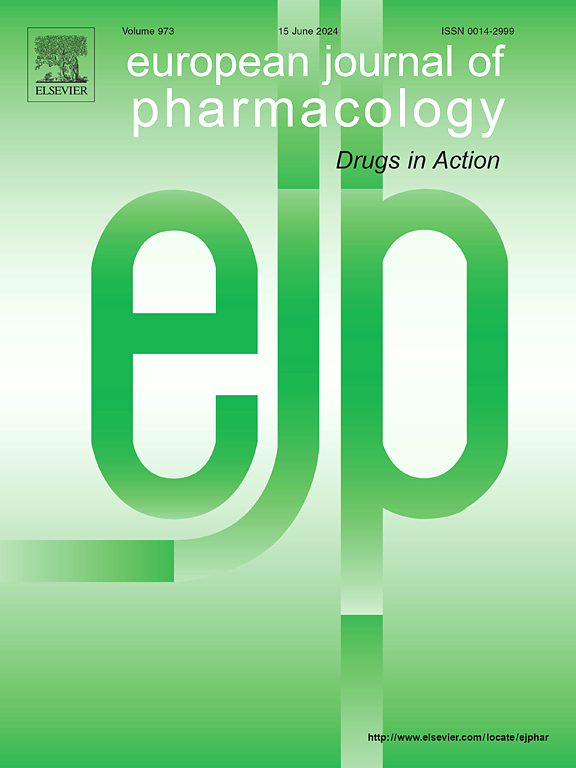木犀草素治疗糖尿病及其并发症的分子机制及治疗前景
IF 4.2
3区 医学
Q1 PHARMACOLOGY & PHARMACY
引用次数: 0
摘要
广泛的临床前研究已经确定木犀草素是一种具有有效抗糖尿病活性的类黄酮,可用于预防和治疗各种糖尿病并发症,包括心肌病、肾病和骨病。本系统综述评估了目前关于木犀草素抗糖尿病潜力的证据。本研究通过证据综合评估木犀草素在糖尿病治疗中的疗效,同时批判性地评估当前的研究挑战和转化机会。方法综合检索Pubmed、Embase、Web of Science和b谷歌Scholar数据库,检索2000 - 2024年间发表的文章。结果芦竹素是一种天然存在的黄酮类化合物,具有较强的抗糖尿病作用。它调节肠道微环境稳态、脂肪生成和分解代谢以及碳水化合物的吸收。它还通过减少炎症、氧化应激、细胞凋亡和自噬来调节9种糖尿病并发症。尽管木犀草素具有潜在的营养和生理益处,但必须立即关注其生物利用度,创新配方,安全性评估,协同效应以及最佳剂量和补充时间。特别是需要临床研究来验证有效性和安全性,并提供可靠的科学依据。结论木犀草素可能作为一种多效性分子,靶向多种信号级联通路发挥抗糖尿病生物活性。本文章由计算机程序翻译,如有差异,请以英文原文为准。

Molecular mechanisms and therapeutic perspectives of luteolin on diabetes and its complications
Background
Extensive preclinical studies have established luteolin, a flavonoid with potent antidiabetic activity, as a therapeutic candidate for preventing and managing various diabetic complications including cardiomyopathy, nephropathy, and osteopathy. This systematic review evaluates current evidence regarding luteolin's antidiabetic potential.
Aim of the study
This study evaluates luteolin's efficacy in diabetes management through evidence synthesis, while critically assessing current research challenges and translational opportunities.
Methods
A comprehensive literature search was conducted across Pubmed, Embase, Web of Science, and Google Scholar databases, encompassing articles published between 2000 and 2024.
Results
Luteolin is a naturally occurring flavonoid that has strong antidiabetic properties. It regulates intestinal microenvironmental homeostasis, lipogenesis and catabolism, and the absorption of carbohydrates. It also modulates nine diabetic complications by reducing inflammation, oxidative stress, apoptosis, and autophagy. Luteolin's potential nutritional and physiological benefits notwithstanding, attention must be directed immediately to its bioavailability, innovative formulations, safety assessment, synergistic effects, and optimal dosage and time for supplementation. In particular, clinical studies are needed to validate efficacy and safety and provide a reliable scientific basis.
Conclusion
Luteolin may act as a pleiotropic molecule targeting multiple signaling cascades to exert antidiabetic bioactivity.
求助全文
通过发布文献求助,成功后即可免费获取论文全文。
去求助
来源期刊
CiteScore
9.00
自引率
0.00%
发文量
572
审稿时长
34 days
期刊介绍:
The European Journal of Pharmacology publishes research papers covering all aspects of experimental pharmacology with focus on the mechanism of action of structurally identified compounds affecting biological systems.
The scope includes:
Behavioural pharmacology
Neuropharmacology and analgesia
Cardiovascular pharmacology
Pulmonary, gastrointestinal and urogenital pharmacology
Endocrine pharmacology
Immunopharmacology and inflammation
Molecular and cellular pharmacology
Regenerative pharmacology
Biologicals and biotherapeutics
Translational pharmacology
Nutriceutical pharmacology.

 求助内容:
求助内容: 应助结果提醒方式:
应助结果提醒方式:


